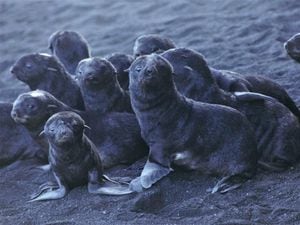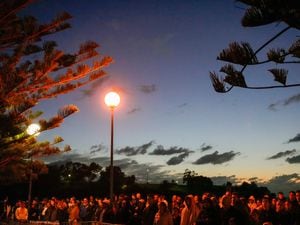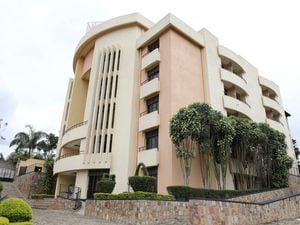Giving birth on a live volcano helps boost numbers of struggling seal species
The northern fur seal is thriving on Alaska’s Bogoslof Island which continues to spew steam and sulphurous gases.

A struggling species of seal is using an unlikely place to revive its population as expectant mothers flock to a tiny live volcanic island to give birth to pups.
The population of Alaska’s northern fur seal population has for three decades has been classified as depleted, but the marine mammals are showing up in growing numbers at Bogoslof, a tiny island that forms the tip of an active undersea volcano.
Vents on the island continue to spew mud, steam and sulphurous gases two years after an eruption sent ash clouds into the path of jetliners passing over the Bering Sea.
Still, northern fur seal mothers find the remote island’s rocky beaches perfect for giving birth and mothering pups.
“The population growth of northern fur seals on Bogoslof has been extraordinary,” said Tom Gelatt, who leads a NOAA Fisheries group that studies northern fur seals.
US federal scientists visited the island in August.

Geographically speaking, the island is not a particularly unusual place for the seals known for their thick coats to hang out.
Most of the world’s roughly 1.1 million northern fur seals breed in the eastern Bering Sea.
The animals live in the ocean from November to June and head for land in summer to breed and nurse pups.
But why the seals chose volatile Bogoslof over the dozens of other uninhabited Aleutian Islands is unclear.
“The surface is covered with these big, ballistic blocks, some as big as 10 metres (33 feet) in length that were exploded out of the vent,” said Chris Waythomas, a US Geological Survey research geophysicist at the Alaska Volcano Observatory.

“They litter the surface. It’s pretty wild.”
The eastern Bering Sea population of northern fur seals numbers about 635,000, with their main breeding ground on St Paul Island, 240 miles northwest of Bogoslof.
A California stock in the San Miguel, Channel and Farallon Islands is estimated at about 14,000 animals.
Other northern fur seals live in Russian waters, though it was unclear how many.
Fur seals were first spotted on Bogoslof in 1980, and NOAA researchers have since conducted periodic checks on the population.

In 2015, biologists estimated an annual growth rate of just over 10% to approximately 28,000 pups on the island.
The 2019 estimate likely will be more than 36,000 pups, Mr Gelatt said.
Food in the deep water near the island could be a factor.
The animals stay on beaches, but on Bogoslof, which is about a third the size of New York City’s Central Park, they are never far from signs of volcanic activity.
The centre of the island supports a field of fumaroles, openings through which hot gases emerge.
Some roar “like jet engines” and spurt mud geysers several metres high, Mr Waythomas said.
He has visited the last two summers.
“It was amazing, the sounds that were being produced,” he said.

Eruptions in 2016 and 2017 showered the landscape with rocks and killed all vegetation.
They also shrank and grew the island.
Explosions destroyed acres of Bogoslof only to have fragmented material blown from lava vents create new land.
The island remains about 0.5 square miles.
Bogoslof is surrounded by deep water, and its seals eat squid and northern smoothtongue, a deep-water fish that looks like a smelt.
Seals on St Paul, the largest of the Pribilof Islands, forage on the shallow continental shelf for walleye pollock, a fish targeted by commercial fishermen.
Females with pups on Bogoslof return from foraging faster than Pribilof mothers, possibly allowing their pups to receive more meals and wean at a larger size, Mr Gelatt said.
Bogoslof also is closer to winter feeding grounds south of the Aleutians, possibly allowing pups to reach the grounds with less risk from Bering Sea storms.
NOAA biologists do not know why northern fur seals have not made a comeback.
“That’s the million-dollar question,” Mr Gelatt said.
Competition for prey from the commercial fishing fleet, predation by killer whales, disease and ecosystem changes affecting seal or prey behaviour are possibilities.
Volcanic activity on Bogoslof has been relatively stable, but Mr Gelatt’s crew chose not to camp there during their week-long August expedition, fearing a recurrence of explosions that could shoot boulders like bottle rockets.
They instead made day trips from an anchored boat.
The crew counted seals and assessed whether aerial images taken from unmanned aircraft could be used in future counts.
As fewer seals breed on St Paul Island, the growth on Bogoslof is significant.
“Barring other future catastrophic eruptions that could dramatically change the geography of the island, there is plenty of room for a lot more seals on Bogoslof,” Mr Gelatt said.





